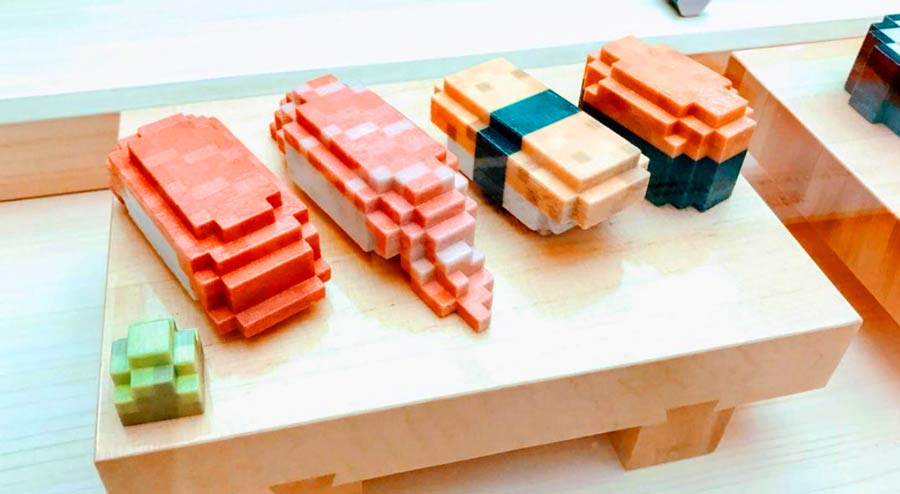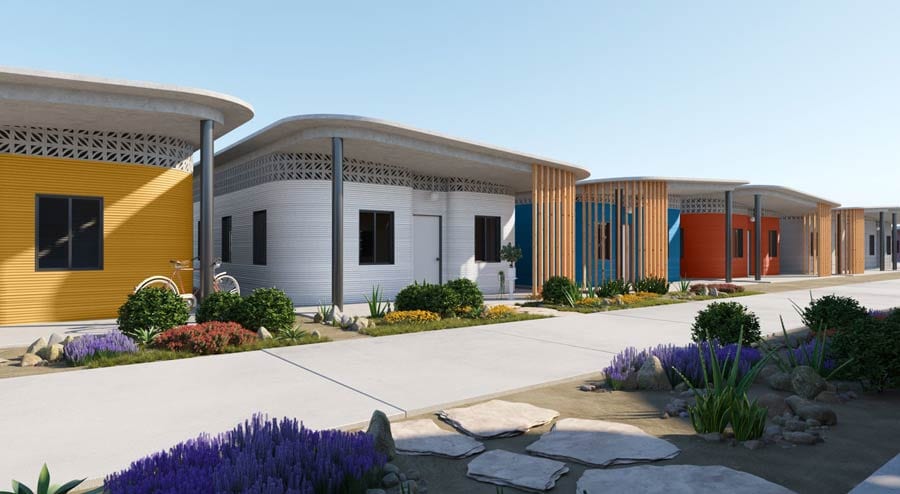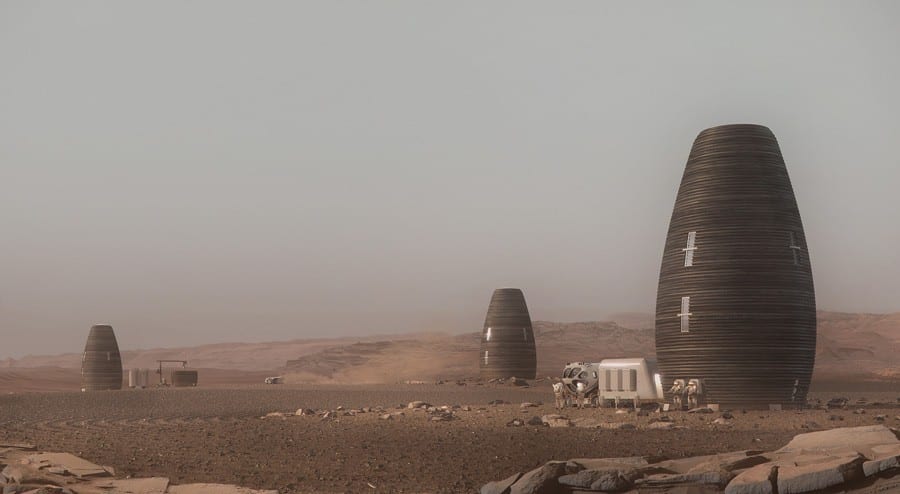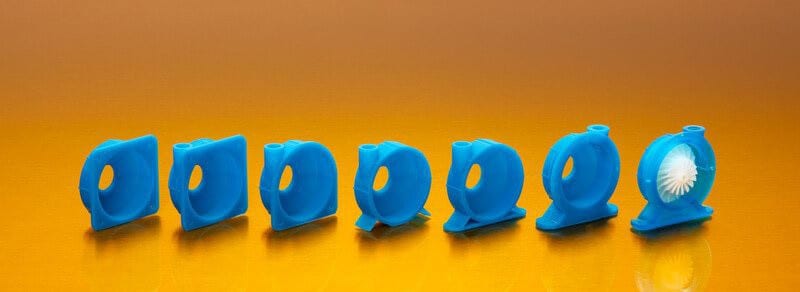- Reduced brittle failures: Increased elongation by more than 100%.
- Improved strength and stiffness: Increased flexural strength and flexural modulus by roughly 15%.
- Better performance at elevated temperatures: Increased heat deflection temperature by roughly 25%.
- Professional-looking parts: New grey color.

The dynamic duo, Bonnie and Clyde, the perfect pair: Formlabs 3D printers and PTC Creo. Combining these two technology leaders advance businesses to their full potential. When you combine Formlabs 3D printers with PTC Creo, you get an unbeatable combination for creating designs, prototypes and final products.
What is PTC Creo?
PTC Creo is a cutting-edge CAD software with an intuitive user interface that makes it easy to design and optimize your 3D models.
With PTC Creo, you can create high-quality 3D models with powerful features for analysis, visualization, and manufacturing. You can also import existing data from other applications or use the built-in tools to convert 2D drawings into 3D models.
This 3D CAD software solution also has options for live simulation tests to minimize prototyping. You can make sure the parts you are printing have been tested for durability before they even reach the physical world.

What are Formlabs 3D Printers?
Outside of the outcome being a cool physical representation of your design, 3D printing is a fast and cost-effective way to prototype your product.
Formlabs printers use stereolithography technology (SLA) to produce high-quality parts with smooth surfaces, sharp details and no visible layers or seams – all while being fast enough for production-level throughputs. And because they’re so precise, they’re ideal for creating prototypes that look just like what customers expect from final products!
By using 3D printing, you can create prototypes that look like the final product and test them before mass production. This allows you to make changes based on user feedback before investing in tooling for manufacturing. This hardware can save you time and money on low-waste prototypes and production and improve product quality.
Combining Formlabs 3D Printing with PTC Creo
PTC Creo is an industry-leading CAD software that allows you to model, design and simulate your products. Formlabs 3D printers are the best way to bring these digital designs into physical form. When you combine PTC Creo with Formlabs 3D printing, you can:
Reduce time-to-market by enabling designers and engineers to iterate more quickly on their designs before committing them to tooling or manufacturing processes.
Improve product quality by being able to prototype complex geometries that would otherwise be difficult or impossible using traditional manufacturing methods.
Increase design accuracy by allowing for greater flexibility in prototyping new concepts without the constraints imposed by traditional manufacturing processes.

Using Formlabs 3D Printers with PTC Creo
Using Formlabs 3D printers have many benefits. It’s an inexpensive and quick way to produce prototypes, which can be used to test or validate your design before investing in expensive tooling.
Some benefits that you will see form Formlabs printers:
You can also use 3D printed parts as production-quality end products to save time and money on manufacturing while maintaining quality control throughout the process.
If you’re already using PTC Creo for your CAD/CAM needs, then combining it with Formlabs 3D printers is a smart move because they both offer powerful toolsets that have easy collaboration.
EAC has partnered with Formlabs since 2016 and we now have almost 50 customers using both Creo software and Formlabs printers.
So if you use either of those products today (or plan on doing so soon), this article will show how easy it is for them to work together!
All-in-one in house design and printing creates a smooth-running production process that will save your business money.
Here are some of the benefits of using Formlabs 3D printers with PTC Creo:
1. Faster Prototyping
When combined with PTC Creo, 3D printing with Formlabs printers is fast and efficient – you can quickly iterate on designs and convert your files to create high-quality prototypes. This means you can get your product to market faster and stay ahead of the competition.
Formlabs printers are faster print times with no visible layering and fewer supports needed to clean off.
Also, Converting PTC Creo files to files that are readable on Formlabs printers takes a few minutes on a free Formlabs converter called Freeform. It’s easy to upload a Creo design file into Freeform to convert it to an STL file and then send it directly to your Formlabs printer. Your prints will be ready to go in no time.
2. Improved Design Accuracy and Customization
Formlabs 3D printers offer high resolution and accurate prints, which means you can create prototypes that look and feel like the final product. This allows you to test your designs more accurately and make changes before committing to manufacturing.
Customization and small-scale production runs, which are great for creating unique products or limited edition runs, are made possible with Formlabs 3D Printers. PTC Creo can help you design and optimize these products to meet your exact specifications with the versatility of tools that it provides.
3. Cost Savings
By using Formlabs 3D printing for prototyping, you can save money on tooling and manufacturing costs. This is especially true with Formlabs printers, which offer high-quality prints at a lower cost than traditional manufacturing methods.
While there are some printers that have direct integrations from PTC Creo, you could be spending $50k-$80k more on printers. Converting PTC Creo files to files that are readable on Formlabs printers takes a few minutes and costs you nothing.
4. Increased Productivity
By combining PTC Creo and Formlabs 3D printers, you can work more efficiently and get more done in less time. PTC Creo’s powerful design tools and Formlabs’ fast printing speeds allow you to create high-quality prototypes and final products quickly and easily.
Conclusion
Taking advantage of the power of PTC Creo 3D CAD software for product design and creation and advanced Formlabs 3D printers for physical production, you get an unbeatable combination for creating prototypes and final products.
In conclusion, combining Formlabs 3D printers with PTC Creo offers numerous benefits that can help you create high-quality prototypes and final products faster, more accurately, and at a lower cost. So, if you’re looking to innovate your product design process, consider using Formlabs printers with PTC Creo.
Reach out to one of our experts to find out which solution would benefit your production process.
Formlabs is making their Tough resin even tougher – with a reformation – offering Tough 2000 as the more advanced 3D printing material.
Formlabs and EAC will continue to sell the Tough resin until it is sold out – then it will be replaced with Tough 2000. If you’ve been using Tough resin – it will be available through the end of 2020.
You can use the Tough 2000 resin on Formlabs desktop stereolithography (SLA) 3D printers – specifically on the Form 3+.
Tough 2000 vs Tough
Compared to Tough Resin, this material reformulation brings:
Tough 2000 Resin is the strongest and stiffest material in the functional family of Tough and Durable Resins, with “2000” representing the material’s tensile modulus. The resin is improved elongation, strength, and stiffness, which are typically competing mechanical properties.
Due to its high strength and modulus, Tough 2000 Resin can handle higher stress and will hold its shape better under load compared to Tough 1500 or Durable Resins. When pushed to its stress limit, Tough 2000 parts will bend significantly before ultimately breaking.
Note that Tough 2000 Resin requires specialty resin tanks, Form 2 LT Tank or Form 3 Tank v2.
Other Tough and Durable Resins
This video clip shows a stress test between the Tough 2000, Tough 1500, and Durable Formlabs resins.
Tough 1500 Resin is the most resilient material and is ideal for: prototypes that repeatedly bend and quickly return to shape; jigs and fixtures requiring repeated deflection; and simulating the strength and stiffness of polypropylene (PP).
Durable Resin is the most pliable, impact resistant, and lubricious material and is ideal for: squeezable prototypes and low friction assemblies; non-degrading surfaces as a result of repeated wear; jigs and fixtures that will experience significant impacts; and simulating the strength and stiffness of HD/LD polyethylene (PE).
When should I use Tough 2000 resin?
Tough 2000 Resin offers more advanced mechanical properties and a new dark grey look. It is ideal for:
- Strong and stiff prototypes
- Jigs and fixtures requiring minimal deflection
- Simulating the strength and stiffness of ABS
Choose Tough 2000 Resin for prototyping strong and sturdy parts that should not bend easily, such as housings and enclosures, jigs and fixtures, mechanical connectors, and prototypes undergoing wear and tear.
You can use this resin with applications across engineering, product design, and manufacturing. Tough 2000 resin can be printed for prototypes undergoing wear and tear, mechanical connectors, and housing and enclosures such as the below motor mount.
The improved strength, stiffness, and elongation allow engineers and product designers to iterate with higher confidence and reduce brittle failures.
Download the Tough 2000 resin data sheet to read on material properties and tech stats.
This video clip shows a motor threading with the Tough 2000 resin.
Where to find Tough 2000 Resin
You can find Tough 2000 resin in our Formlabs Resin Library where you can either order a sample part or order the actual resin.
In our latest episode of the ‘3D Printing Show’, Anthony Bayerl, Director of Marketing, and Lauren Adey, Additive Manufacturing Specialist bring you the latest news in the 3D printing industry. We have some really interesting news this week including 3D printed sushi, 3D printed homes in El Salvador and on Mars, and a new Draft Resin from Formlabs.
Watch our video to learn about the latest additive manufacturing news.
3D Printed Sushi created from.. urine samples?

3D printed ‘8-bit’ sushi | Image Credit: Open Meals
A company called Open Meals in Japan is doing the unthinkable – 3D printing sushi for its customers. But it’s not just any type of sushi… it’s custom 3D printed sushi… created just for you. Open Meals plan to open their restaurant called Sushi Singularity in Tokyo in 2020 and are looking for people to invest in their concept of digitalized food.
They brought their idea to a tech event called South by Southwest (SXSW) in Austin, Texas just this last year. Their booth wowed onlookers as they demonstrated that they are taking people’s individual chemistry from hair, saliva, or urine samples to create sushi full of custom-tailored nutrients that their body needs. The food is printed in a cube-shape, giving them the nickname ‘8-bit sushi’.
Open Meals booth shows off 3D printed sushi at SXSW 2018 in Austin, TX.
The concept is unique – their idea is to create a healthy meal for you based on your body’s nutritional needs. They send you a ‘health test kit’, you return it with a sample of your choice of bodily fluids, and they’ll send back nutrient-rich edible sushi. Open Meals has a plan to send their customized sushi anywhere in the world, as long as you have a suitable food 3D printer.
3D Printed Concrete Houses for Homeless around the World

3D Printed Housing Community in Latin America | Image Credit: www.dwell.com
By the end of 2019, the partnership plans to house over 400 individuals with around 100 homes in a 3D printed housing community in Latin America. While the average ‘tiny home’ price tag is over $25,000, these 600-800 sq. feet concrete houses can be built for around $4000 in less than 24 hours. The homes themselves are built from locally-sourced concrete to be durable and to sustain weather conditions such as hurricanes or tsunamis.
ICON’s portable 3D printer, called the Vulcan II, is built to withstand real-world conditions and restraints in third-world countries such as power shortages, access to water, and limited labor. With only a few workers needed due to the 3D printer’s remote monitoring technology, the homes are built with almost zero waste and are sustainable for several centuries.
New Story and ICON lead the way for future 3D printed homebuilding.
AI SpaceFactory works with NASA to build homes on Mars

3D printing a community on Mars | Image Credit: AI SpaceFactory
AI SpaceFactory is a company comprised of architectural designers and engineers with a desire to build sustainable and eco-friendly habitats on Earth and Mars. Through 3D printing technology, SpaceFactory has developed a 3D printed vertical home or habitat, called MARSHA (MARS HAbitat), that serves as a livable space for humans on Mars.
The structures are built with a double shell system for isolation from extreme temperature swings and harsh conditions on the planet. The first floor consists of a Mars Exploration Rover docking port, a wet lab, and space hatches for entry/exit; the second floor consists of a dry lab and kitchen; the third floor consists of a bathroom, a garden, a sleeping quarters, and an office space; and the fourth floor consists of a ‘sky room’ for exercise and recreational purposes.
MARSHA considers an optimum mental health environment for humans by including windows on every floor with natural sunlight and artificial lighting that mimics Earth-like light.
According to SpaceFactory, MARSHA habitats are made from a mixture of basalt fiber from Mars rock and renewable bioplastic (polylactic acid, or PLA) processed from plants grown on Mars – which is their plan for agricultural sustainability.
Introducing AI SpaceFactory’s MARSHA habitat for living on Mars.
New 3D Printing Draft Resin From Formlabs

Draft Resin, from Formlabs, for multiple design iterations.
The new Draft Resin is three to four times faster than other Standard Resins giving you the ability to cycle through multiple design iterations at a time. Request a free sample of the Draft Resin to see how the material holds up to your standards.
Lauren Adey, our Additive Manufacturing Specialist, can help you choose the right 3D printer or resin for your needs. Make sure to follow her on LinkedIn to see more additive manufacturing news!